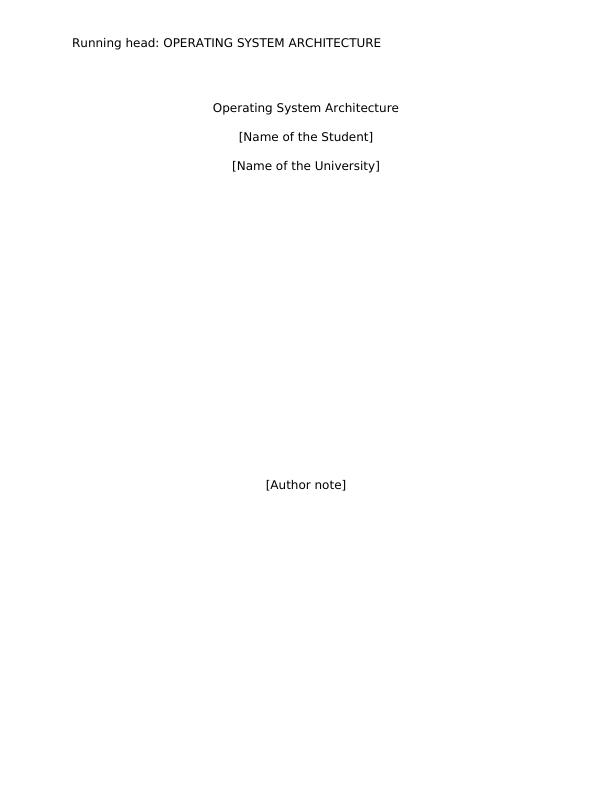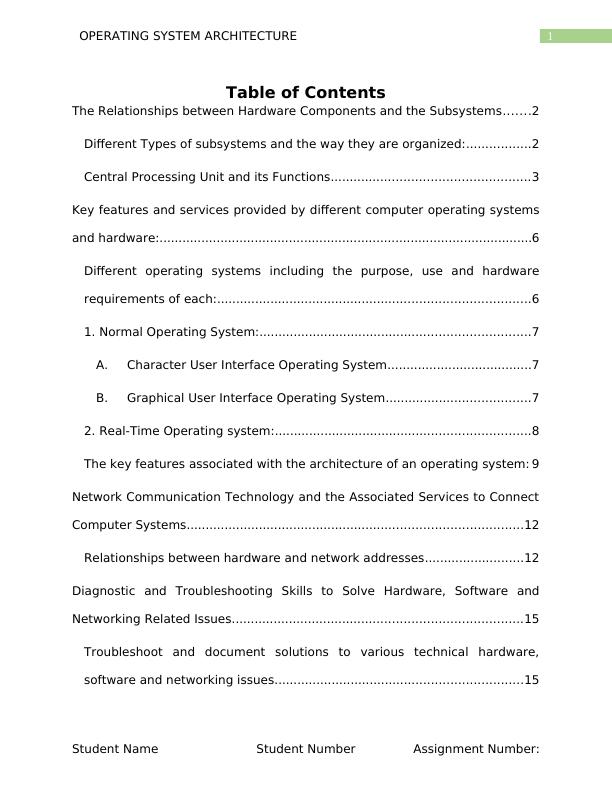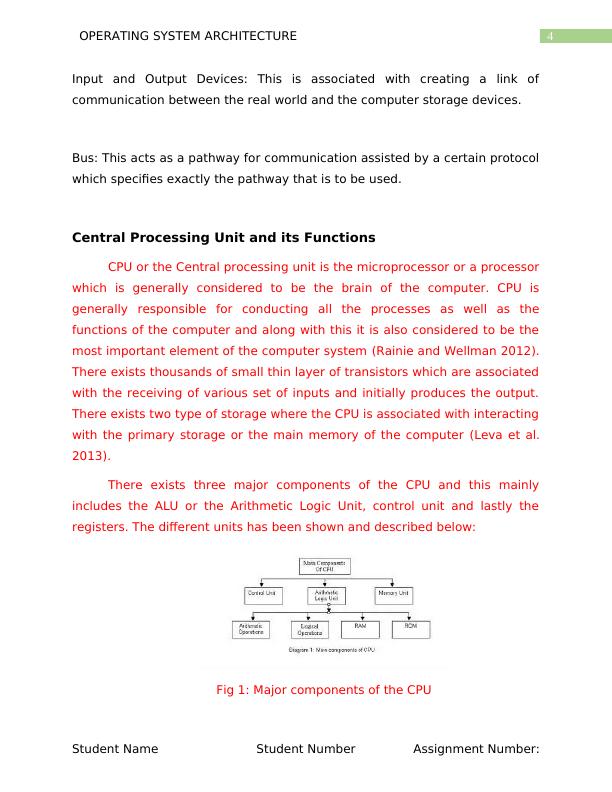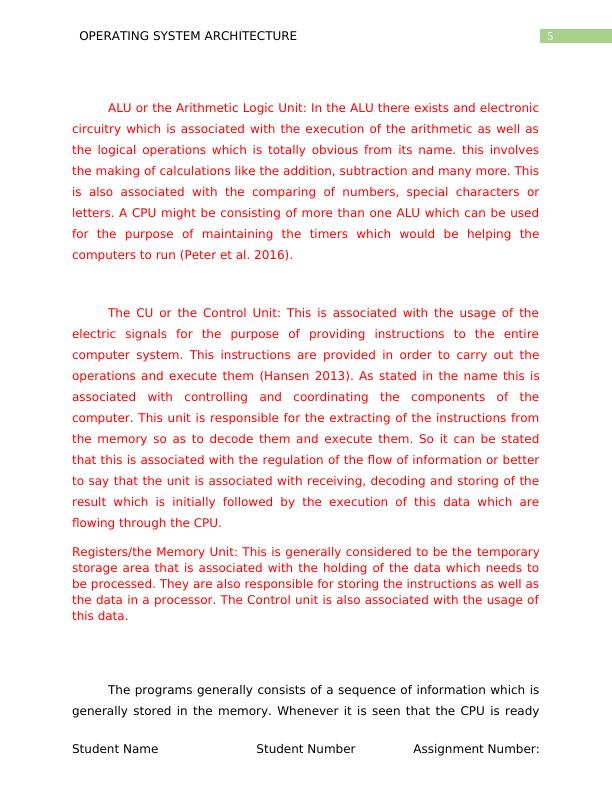Operating System Architecture - Relationships, CPU Functions, and Different Types of Operating Systems
Learners are expected to explain the relationships between hardware components and subsystems in a computer system, identify and explain the main subsystems of a computer, review the operation of the CPU, evaluate the structure and functions of an operating system, explain the purpose of the CPU, categorize key features and services provided by different operating systems, describe different operating systems and their hardware requirements, analyze the services provided by an operating system, and create a presentation or training package.
Added on 2023-06-10
About This Document
Operating System Architecture - Relationships, CPU Functions, and Different Types of Operating Systems
Learners are expected to explain the relationships between hardware components and subsystems in a computer system, identify and explain the main subsystems of a computer, review the operation of the CPU, evaluate the structure and functions of an operating system, explain the purpose of the CPU, categorize key features and services provided by different operating systems, describe different operating systems and their hardware requirements, analyze the services provided by an operating system, and create a presentation or training package.
Added on 2023-06-10
End of preview
Want to access all the pages? Upload your documents or become a member.






